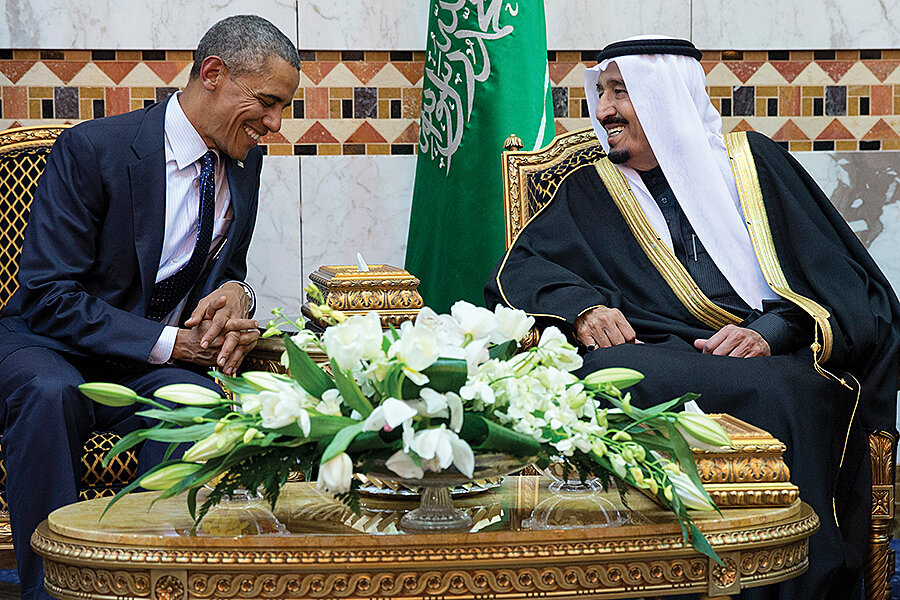Behind a changing equation
Loading...
In the late summer of 1990, the US military was rapidly building up in Saudi Arabia following Saddam Hussein’s invasion of Kuwait. Had Iraq pushed a little farther south, the Saudis’ fabled oil fields would have been threatened. That represented a clear and present danger to the United States. As had been the case since the presidency of Franklin Roosevelt, these two nations – one a fundamentalist monarchy, the other a secular democracy – were codependent.
Despite deep cultural differences, the alliance was unquestioned. American troops would protect the kingdom (the initial US response was aptly named Operation Desert Shield). Saudi oil, so crucial in powering the Western world, could not be imperiled.
That grand bargain has defined the US-Saudi relationship through crises that would have caused rifts – even wars – among other nations. There was, for instance, the Saudi-led oil embargo in 1973. US support for Israel, then-King Fahd said, made it “extremely difficult for us to continue to supply the United States with oil, or even remain friends with the United States.” But less than a year later, the embargo was over, US support for Israel was unchanged, and Riyadh and Washington signed an extensive agreement on economic and military cooperation.
Then there was 9/11. All but four of the 19 hijackers were from Saudi Arabia. Osama bin Laden was from a prominent Saudi family. Then and now, Saudi oil money had spread the kingdom’s Wahhabi brand of Islam, which gave rise to Al Qaeda, the Taliban, Islamic State, and other Islamist movements. Beheadings and other medieval punishments practiced by IS and condemned by human rights groups are routine in Saudi Arabia. But both Republican and Democratic administrations refrain from openly criticizing the Saudis, and Saudi Arabia and the US maintain extensive intelligence and counterterrorism ties.
The US-Saudi relationship is foremost an example of the old maxim that nations don’t have permanent friends or enemies, only interests.
Those interests are changing, however, as US energy independence increases and US involvement in the Middle East diminishes. Under its new king, Saudi Arabia, the subject of Taylor Luck’s cover story (click here), is taking on a more assertive role in the Middle East: leading a military campaign in Yemen, waging economic war on Iran, backing the ouster of the Muslim Brotherhood-backed president in Egypt, and bolstering relations with Turkey.
The Saudis are protecting their territory, interests, and – most important – their credibility. More than 1.5 billion Muslims turn to Saudi Arabia each day to pray. The kingdom’s role as the spiritual center of Islam is threatened on the one hand by IS’s claim to be Sunni Islam’s official caliphate and on the other hand by the growing influence of Sunni Islam’s great rival, Shiite Iran. King Salman has concluded that as “custodian of the two holy mosques” his kingdom must cast a bigger shadow.
The long-running US-Saudi relationship will endure. But a changing energy equation, a changing religious landscape in the world of Islam, and a changing Middle East are changing the kingdom.






